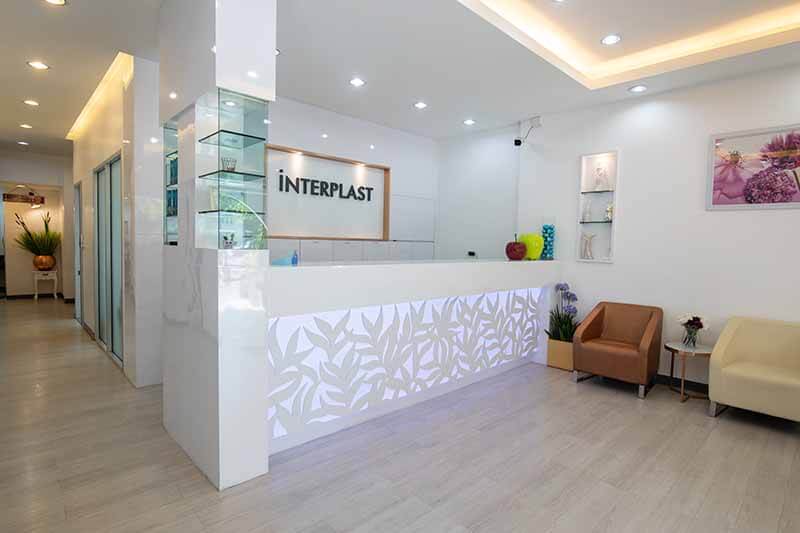Gender Reassignment Surgery Scrotal Skin Grafting Technique in Thailand
Scrotal skin grafting is non penile inversions SRS technique that involves using skin grafts from the penis and the scrotum to construct a neovagina and its main parts.
Sex Change Surgery: Scrotal Skin Grafting
Technique IN BANGKOK, THAILAND
Interplast Clinic’s pioneering SRS techniques provide the most anatomically correct, functional and aesthetic neovagina.
Sex reassignment surgery with scrotal skin graft and flap method is the most common method at our clinic and recommended for most SRS patients. Under this technique, skin graft and preputial flap are used to construct a neovagina and its main parts including clitoral hood, clitoris, vestibule, urethra, and labia. The surgery usually lasts 6-7 hours.
With this technique, the neovagina is constructed from different parts of the existing genitalia. With most of its nerves and vessels remaining intact, the newly constructed neovagina is functional and has erogenous sensitivity. Moreover, due to the delicate selection of the material used, the neovagina will be very similar to that of a cisgender woman in terms of beauty, color, shape, arrangement, and size.
Characteristics of Scrotal Skin Grafting Technique
- Clitoral hood: The clitoral hood is constructed from the penile skin and the dorsal prepuce flap that is connected to the clitoris.
- Clitoris: The clitoris is formed from the top part of the glans penis, keeping nerves that supply it intact. Thereby creating a sensate clitoris and labia.
- Vulvar vestibule: The vulvar vestibule (the part of the vulva between the labia minora) is formed from parts of the glans penis with intact sensory nerves and vessels and a narrow strip of urethral mucosa.
- Labia minora: The prepuce flap with intact sensory nerves is used to construct the inner labia. The labia minora, which extends over the neoclitoris, upper vulva, urethral opening, and the upper part of the vaginal opening, is pink and can be stretched just like other labia.
- Labia majora: The scrotal skin will be used to form the labia majora. The scrotal flap is set tightly to look like the labia majora of a young woman.
- Vaginal wall: The remaining scrotal skin (after constructing the labia majora), perianal skin flap, and (occasionally) inverted penile skin flap will be used to construct the vaginal wall which will have fully functional depth, elasticity, and natural color.
- Vaginal wall: The remaining scrotal skin (after constructing the labia majora), perianal skin flap, and (occasionally) inverted penile skin flap will be used to construct vaginal wall which will process fully functional depth, elasticity, and natural colour.
- G-Spot of neovagina: The g-spot area is composed of the labia minora, clitoris, part of the urethral flap, and prostatic capsule. This complex of sensate organs creates an erogenous g-spot for the neovagina.
Advantages
- Patients with a penis length shorter than 4 inches can undergo surgery, as well as those with a longer penis.
- The skin grafting technique produces an aesthetically pleasing and natural-looking neovagina.
- The depth of the neovagina is sufficient for vaginal intercourse with a typical depth between 5-6 inches.
- It is a one-step procedure, meaning patients will not need a secondary labiaplasty in most cases.
- The length of the surgery is shorter than that of a colon vaginoplasty.
- Shorter recovery period compared to a colon vaginoplasty.
Disadvantages
- This technique is highly sophisticated.
Inclusion Criteria:
To be able to undergo vaginoplasty using the skin grafting technique, patients must fit the following criteria:
- Be under 60 years of age
- Have sufficient scrotal skin to form a scrotal flap
Sex Change Surgery: Scrotal Skin Grafting Technique
Surgical Procedure
Scrotal skin grafting performed at Interplast Clinic is a highly specialized technique. It is conducted by our board-certified surgeons who are specialists in the field of cosmetic and neovaginal constructive surgery. A multidisciplinary collaboration is carried out from the very beginning during the preoperative period through to post-operative care to guarantee the best surgical result. In most cases, the surgery is performed according to the following procedures:
A general anesthetic is administered to the patient. Then, the patient’s position is set in standard lithotomy. To enhance protection and comfort during the surgery, a silicone cushion is placed under the back and legs to distribute weight and provide pressure relief.
The perineal skin flap is cut and prepared for the vaginal opening construction process which is conducted later. The vaginal opening and vaginal lining are formed below the urethra (urinary tube) and the prostate gland. The prostate capsule is then moved up. A 4-inch (or bigger) pocket is made inside the body. This will create a space for the neovagina. After that, the vaginal canal will be formed and inclined towards the recto-vesical pouch. The average depth of this newly constructed neovagina will be around 5-6 inches.
The testicles and spermatic cords are removed (orchidectomy). The inverted penile skin flap is arranged to form the labia minora. In some cases, together with a perineal skin flap, the inverted penile skin flap is also used to form the vaginal lining. Usually, a scrotal skin graft is added to allow additional depth of the vagina.
The penis shaft is removed. Some parts of the glans penis and its sensory nerves are utilized to form the clitoris. The urethral opening is positioned above the vaginal opening (introitus). The urinary tract is shortened and arranged in a position that allows urine to flow in the same manner as that of a cisgender woman. The urethral mucosa laid between the clitoris and urethral opening resembles moist vulva mucosa.
Parts of the glans penis with nerves and vessels intact are converted into the clitoris. As a result, the new clitoris will have erogenous sensitivity and look very natural. Excess erectile tissue around the urethra is removed to prevent tissue engorgement during sexual arousal. If left untreated, the tissue engorgement could narrow the vaginal opening and cause difficulties during sexual intercourse. The prepuce flap (pink-color skin covering the glans penis) is formed into the inner labia. This flap will be long enough to extend over the neoclitoris, urethral, and the upper part of the vaginal opening. If needed, the inner labia lip can be made thinner during the labiaplasty stage which can be carried out later. All parts of the neovagina are constructed. A vaginal packing is inserted inside the neovagina and will be removed in the following 5 days after the operation.
Before the Surgery
- Nd:YAG laser hair removal should be performed on the perineal skin above the anus 5-7 months before surgery. The hair removal process should be completed at least 2 months before surgery to allow the skin to recover and regain its strength and elasticity.
- All anti-androgen and hormone injections must be completely stopped four weeks before the surgery. Oral tablets and other forms of treatment, such as skin gels and patches, must be stopped two weeks before surgery to prevent the risk of deep vein thrombosis (DVT).
- You should stop smoking four to six weeks before surgery for optimal recovery and commit to not smoking for at least one month post-surgery.
- Aspirin (e.g. Advil), Ibuprofen, and Vitamin E must be stopped for two weeks before the surgery as they can increase the risk of intraoperative bleeding and other complications. Certain foods which can cause excessive bleeding, such as garlic and ginkgo leaves, should also be avoided.
- You should consume clear fluids only for up to 6 hours before surgery.
Recovery
- Post-operative recovery at the hospital usually takes 6 days.
- After discharge, we recommend staying at a hotel near the hospital for at least 2 weeks before flying back to your home country.
- It is normal to experience some pain after surgery, but this can be controlled with medication and antibiotics. The pain will gradually subside after 2-3 days.
- You will require a urinary catheter which will stay in place for at least 5 days.
- You may experience some pain, swelling and irritation from the catheter, but this should gradually subside after 2-3 days.
- You shouldn’t get up and start walking around until the doctor inspects the incision and removes the vaginal stent.
- During the first few days after the operation, you will be served a soft meal low on fiber to avoid defecation, which could cause infections. Vegetables, fruits, and other high fiber products must be avoided.
- A vaginal packing will be inserted at the end of the surgery and it will remain in place for five days. On the sixth day, the vaginal packing, tube drain, and catheter will be removed altogether.
- If you experience any difficulty urinating after being discharged from the hospital, you should return to the hospital or contact your surgeon as soon as possible.
- You’ll be given a diet plan to follow after surgery as well as instructions to prevent deep vein thrombosis (DVT).
- After discharge from the hospital, you’ll be given home care instructions for cleaning and taking care of the wound which must be followed carefully.
- You’ll be shown how to perform vaginal dilation. You must strictly follow the dilation instructions given to you.
- Continue to take all medications prescribed by your surgeon.
- Vaginal intercourse should be avoided for at least 4 weeks.














